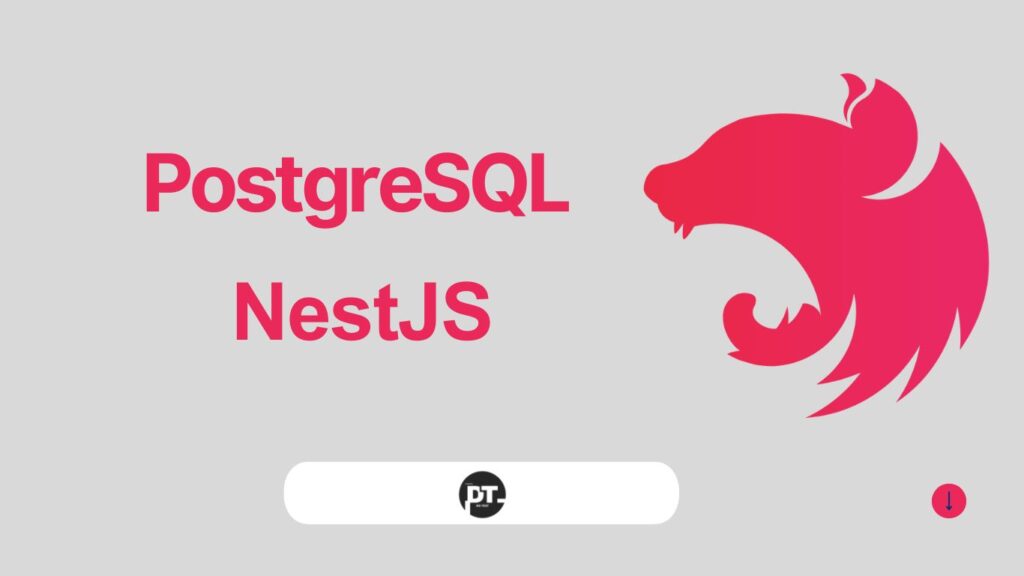Using PostgreSQL with NestJS offers several benefits, as the database’s strengths complement the NestJS framework’s structure and scalability. Here’s why PostgreSQL is an excellent choice for a NestJS application:To connect a NestJS application to a PostgreSQL database, follow these steps:
Table of Contents
Why to use PGSQL with Nest JS
Using PostgreSQL with Nest JS offers several benefits, as the database’s strengths complement the NestJS framework’s structure and scalability. Here’s why PostgreSQL is an excellent choice for a NestJS application:

1. Seamless Integration with ORM Tools -Nest JS and PgSQL Database connectivity
PostgreSQL integrates well with ORM libraries like TypeORM, Prisma, and Sequelize, which are commonly used with NestJS. These tools simplify database interactions by:
- Automating schema generation.
- Managing relationships.
- Supporting advanced features like migrations and custom queries.
NestJS’s modular architecture makes it easy to configure these ORMs for PostgreSQL.
2. Powerful Relational Database Features
PostgreSQL’s advanced relational features match the needs of enterprise-grade applications built with NestJS:
- Complex Query Handling: PostgreSQL supports JOINs, window functions, and CTEs (Common Table Expressions), which are essential for intricate business logic.
- Transactions: It ensures data consistency for applications requiring atomicity, such as e-commerce or financial platforms.
3. Support for Structured and Semi-Structured Data
PostgreSQL’s support for JSON/JSONB aligns with NestJS’s flexibility in handling structured and unstructured data. This is useful in modern applications that deal with:
- Relational Data: For traditional table-based operations.
- Semi-Structured Data: Like JSON documents, ideal for dynamic fields or API responses.
4. Robustness and Reliability
PostgreSQL is known for its stability, making it an ideal choice for production-ready applications built with NestJS. Key aspects include:
- ACID Compliance: Ensures data reliability and integrity.
- Data Integrity Features: Such as constraints, triggers, and foreign key enforcement.
5. Scalability and Performance
PostgreSQL is highly scalable, both vertically (by optimizing hardware resources) and horizontally (via sharding or replication). NestJS applications can grow with PostgreSQL:
- Read-Heavy Applications: PostgreSQL supports read replicas.
- Write-Heavy Applications: Features like partitioning improve write performance.
6. Open Source and Cost-Effective
Both PostgreSQL and NestJS are open-source technologies, making them budget-friendly without compromising on features. You get enterprise-grade capabilities without licensing fees.
7. Ecosystem Synergy
- Microservices Architecture: PostgreSQL supports features like LISTEN/NOTIFY, useful for real-time event-driven systems, which align well with NestJS’s microservice capabilities.
- GraphQL Support: NestJS integrates seamlessly with GraphQL, and PostgreSQL’s JSON support enhances its ability to handle GraphQL queries.
8. Active Community and Documentation
Both PostgreSQL and NestJS have vibrant communities, extensive documentation, and a wealth of tutorials, making it easier to find resources, troubleshoot, and implement best practices.
Ideal Use Cases
- RESTful APIs: PostgreSQL’s flexibility in querying supports the complex logic behind REST APIs built with NestJS.
- Real-Time Applications: Combining PostgreSQL’s event capabilities with NestJS’s WebSocket or microservice features.
- Data-Driven Applications: Analytics platforms, CRMs, or financial systems.
Nest JS and PgSQL Database connectivity
1. Install Required Packages
Install the PostgreSQL driver and the TypeORM package (or Prisma/Sequelize if you prefer another ORM). Nest JS and PgSQL Database connectivity
npm install @nestjs/typeorm typeorm pg
2. Set Up the Database Configuration
Create a .env file to store the PostgreSQL connection details securely. Nest JS and PgSQL Database connectivity
DB_HOST=localhost
DB_PORT=5432
DB_USERNAME=your_username
DB_PASSWORD=your_password
DB_NAME=your_database
Install the @nestjs/config package for environment variables:
npm install @nestjs/config
3. Configure TypeORM in the App Module
Update the AppModule to include the TypeORM configuration.
src/app.module.ts Nest JS and PgSQL Database connectivity
import { Module } from '@nestjs/common';
import { TypeOrmModule } from '@nestjs/typeorm';
import { ConfigModule } from '@nestjs/config';
@Module({
imports: [
ConfigModule.forRoot({
isGlobal: true, // Makes config available globally
}),
TypeOrmModule.forRoot({
type: 'postgres',
host: process.env.DB_HOST,
port: +process.env.DB_PORT,
username: process.env.DB_USERNAME,
password: process.env.DB_PASSWORD,
database: process.env.DB_NAME,
entities: [__dirname + '/**/*.entity{.ts,.js}'], // Path to entities
synchronize: true, // Set to false in production
}),
],
})
export class AppModule {}
4. Define Your Entities
Entities represent database tables. Create an entity file in your project.
Example: src/user/user.entity.ts
import { Entity, Column, PrimaryGeneratedColumn } from 'typeorm';
@Entity()
export class User {
@PrimaryGeneratedColumn()
id: number;
@Column()
name: string;
@Column()
email: string;
@Column()
password: string;
}
5. Generate a Module and Service
Use NestJS CLI to generate a module, service, and controller for your entity.
nest g module user
nest g service user
nest g controller user
6. Integrate Repository in the Service
Inject the repository in the service file for database operations.
Example: src/user/user.service.ts
import { Injectable } from '@nestjs/common';
import { InjectRepository } from '@nestjs/typeorm';
import { Repository } from 'typeorm';
import { User } from './user.entity';
@Injectable()
export class UserService {
constructor(
@InjectRepository(User)
private readonly userRepository: Repository<User>,
) {}
async findAll(): Promise<User[]> {
return this.userRepository.find();
}
async create(user: User): Promise<User> {
return this.userRepository.save(user);
}
}
7. Add Routes in the Controller
Use the service in the controller to handle requests.
Example: src/user/user.controller.ts
import { Controller, Get, Post, Body } from '@nestjs/common';
import { UserService } from './user.service';
import { User } from './user.entity';
@Controller('users')
export class UserController {
constructor(private readonly userService: UserService) {}
@Get()
findAll(): Promise<User[]> {
return this.userService.findAll();
}
@Post()
create(@Body() user: User): Promise<User> {
return this.userService.create(user);
}
}
8. Run Your Application
Start your NestJS application:
npm run start
The application will connect to your PostgreSQL database, and you can perform CRUD operations via the REST API.
Optional: Use Migrations
For production environments, avoid synchronize: true and use migrations instead:
npm install typeorm-cli
typeorm migration:create -n MigrationName
typeorm migration:run
For additional help with migrations, let me know!




[…] Nest JS and PgSQL Database connectivity […]
[…] Nest JS and PgSQL Database connectivity […]
[…] Nest JS and PgSQL Database connectivity […]